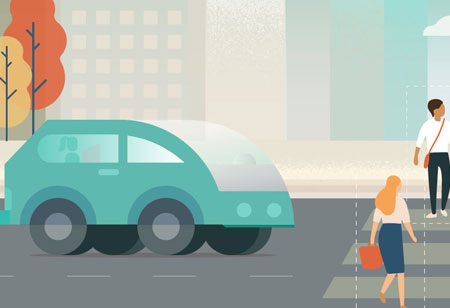Autonomous vehicles have sprouted quickly in the past few years; however, safety has been a big concern. Is AI the missing piece of the puzzle?
FREMONT, CA: Autonomous vehicles (AV) is the future of transport. Consequently, it has sparked a race to manufacture the finest AVs. However, one of the most crucial aspects of transportation - safety, is overlooked, as shown by headline-making accidents. Researchers at the University of Illinois at Urbana-Champaign are implementing emerging technologies such as artificial intelligence (AI) and machine learning (ML) to enhance the safety of autonomous technology.
Implementing AI to improve autonomous vehicle safety is a pressing challenge for manufacturers because of the complexity of the vehicle's electrical and mechanical components. Also, external factors such as weather, road conditions, traffic patterns, topography, and lighting have to be taken into consideration. The researchers at the University of Illinois have developed a platform that enables companies to address safety in the fast-evolving autonomous technology quickly and cost-effectively. They have also collaborated with companies such as Samsung, NVIDIA, and several start-ups.
An AV is a mini-supercomputer on-wheel that has more than 50 processors. It is accelerated to run more than 100 million lines of codes that support computer vision, planning, and other ML-related tasks. It is challenging to integrate AI and machine learning into mechanical, electronic, and computing technologies to make real-time driving decisions.
Transport companies testing autonomous vehicles have to report to the DMV about the safety of their cars. The group of researchers analyzed the report from the year 2014-2017. Upon examining 144 AVs driving a cumulative of 1,116,605 autonomous miles against the same number of miles driven by human drivers, the group concluded that human-driven cars were 4,000 times less likely to get into an accident. This indicates that autonomous vehicles have failed at an alarming rate.
Autonomous car manufacturers cannot train the software until a specific issue arises. Thus, the research group is building techniques and tools to generate driving conditions and issues to improve autonomous vehicle safety. Using their technology, they can mimic a large number of safety-critical scenarios where errors can lead to fatal accidents—saving time and money in the process. The research group tested an openly available AV technology, Apollo, from Baidu and deduced that the software failed to handle a lot of issues. The failures led to an accident in more than 500 scenarios. Their work is getting noticed in the industry, and they are currently working on patenting the technology.
See also: Top Artificial Intelligence Solution Companies

 Copyright © 2025 AutoTech Outlook. All Rights Reserved | Privacy Policy | Subscribe | Sitemap | About us | Feedback Policy | Editorial Policy
Copyright © 2025 AutoTech Outlook. All Rights Reserved | Privacy Policy | Subscribe | Sitemap | About us | Feedback Policy | Editorial Policy